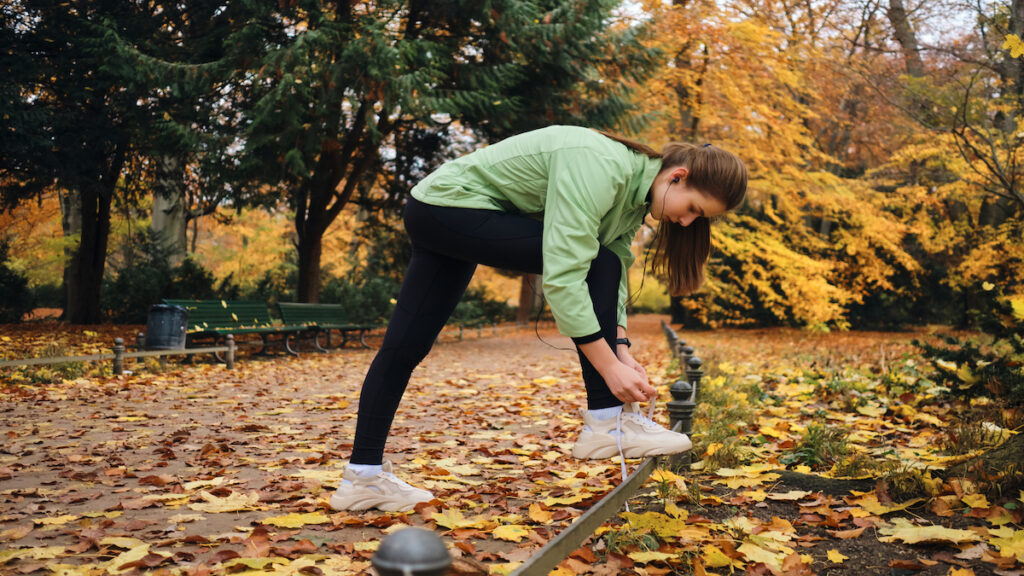Fall foliage paints a stunning backdrop for runs, but those same leaves can become slick after rain and cause runners to have unstable footing if they are not careful. Still, fall remains an ideal time of year for outdoor running, and beginner runners shouldn’t let wet, leaf-covered roads deter them from reaching their fall running goals. Keep in mind that even the most experienced runners can slip on these surfaces.
With a few smart adjustments and tips, runners keep training safely through autumn’s unpredictable weather.
1. Wear the Right Shoes
The best fall running tip to prevent accidental slips and falls is to wear the right shoes. Running shoes are the first line of defense against slippery terrain. Proper fall running shoes should provide strong traction for a better grip on surfaces. Those running trails should opt for trail running shoes that are known to provide extra traction. The sneakers should also be made of water-resistant materials to keep the feet dry and blister-free for fall running.
2. Select the Right Routes
When the forecast is wet, rainy weather, it’s best to run on routes that are familiar. Because leaf-covered trails or uneven sidewalks can hide hazards when conditions are slick, runners should have a good feel of the path or trail. Leaves can cover potholes and uneven surfaces, which can increase the risk of rolling an ankle. It’s best to run on well-lit roads in this case. Because trails tend to have more fallen leaves, only select a trail run when it’s light out for safety.
3. Slow Down Pace and Shorten Your Stride
When the road is slick and filled with leaves, it’s best to slow down to prevent slipping. Rainy or recently wet weather isn’t the. ideal time for speed sessions. A good running strategy is to shorten your stride to keep a solid pace while remaining in control in case of crossing slippery sections of the route.
4. Dress for Comfort and Visibility
Rainy fall mornings and evenings can be chilly, damp, and dark. Dress in lightweight, water-repellent layers that keep moisture out without trapping sweat. The best fall running gear includes a breathable running jacket with ventilation zippers for breathability to keep the runner warm without overheating. Running jackets are also ideal for rainy runs.
Don’t forget about visibility: shorter days mean less light, and rainy conditions reduce driver awareness.
5. Properly Navigate Puddles
Sometimes runners can’t avoid puddles on the pavement after a solid storm. The best running tip is to stick to the edges of the path if possible, where the water isn’t as deep. Slow down and use caution, especially if there are lots of leaves on these edges. Avoiding puddles altogether isn’t realistic, so accept that the feet might get a little wet and have to cross some water. Again, slow down while running through the puddle and keep moving because your body will stay warmer in motion. This is where wearing moisture-wicking running socks comes in clutch to keep the feet as dry as possible and prevent discomfort.
6. Don’t Fear Fall Weather
It’s never smart to run in thunderstorms or on flooded roads. It is fine to run in a light drizzle or roads with a layer of wet leaves. When fall weather isn’t ideal, opt for a treadmill session or strength workout inside. But many runners may find running in fall foliage brings peace and a new challenge worth chasing.

